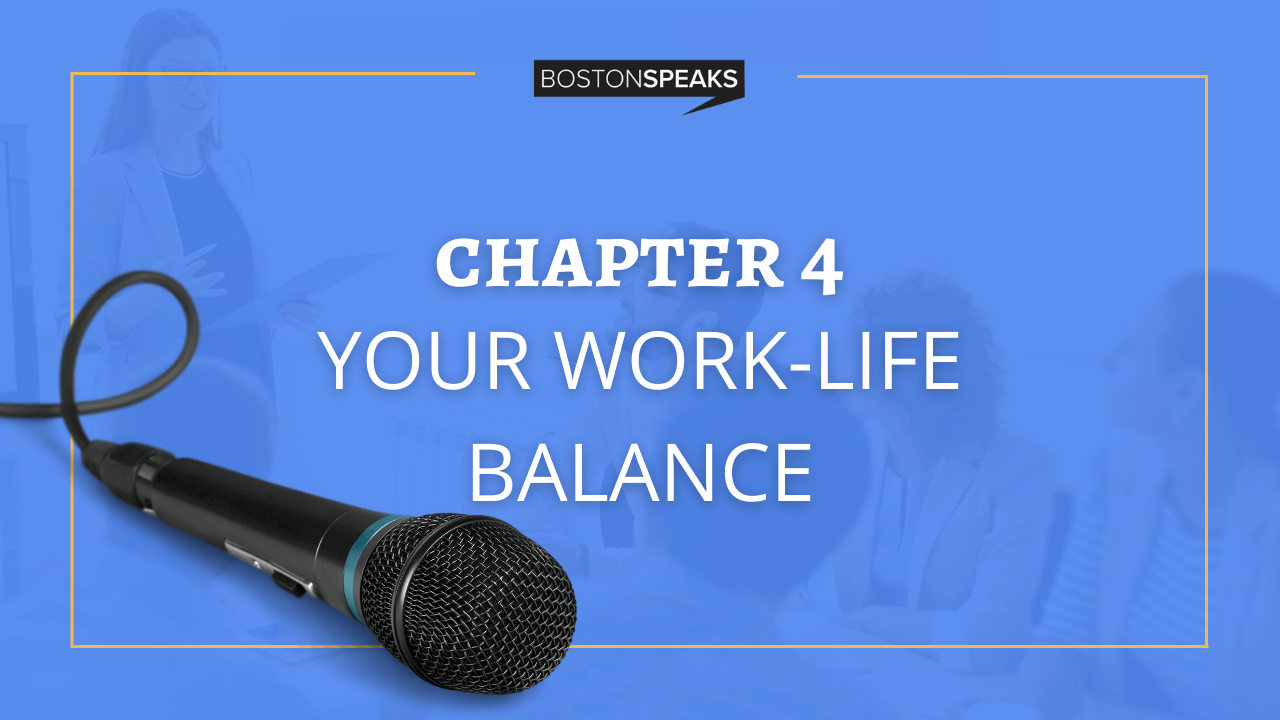
MANAGEMENT: The Comprehensive Guide To Communicating and Managing Your Team As A Leader
Learn how to manage today's (and tomorrow's) workforce.
(Download the PDF Guide Here)
Contents
Intro
Employees have different expectations than in years past. Whether they like it or not, employers are having to shift their practices to keep up with the demands of a new generation of workers.
Overall, today’s workforce wants more autonomy and recognition. Employees want to feel safe to be themselves in the workplace and have their ideas and contributions respected. As technology continues to blur the line between people’s work and personal lives, they are less likely to leave their work at the office, making how they feel about their jobs more important than ever.
Feelings! Autonomy! Being themselves!
What’s a modern manager to do?
Soft skills.
Modern managers need to flex their emotional quotient to be able to listen, communicate, and encourage diverse groups of employees to achieve their business goals.
What soft skills should you have in your managerial toolkit to manage the current generation of workers and beyond?
In the following chapters you’ll learn how to:
- Create a psychologically safe environment that will nurture your employees’ creativity,
- Identify and avoid bias in your personal interactions,
- Encourage collaboration by managing conflicts, and
- Avoid burnout through prioritization and delegation.
Are you ready to soften up your managerial style?
Let’s get to it.
Chapter 1: Provide Psychological Safety

In her excellent article, We’re in it together: The future of team management, Page Grossman writes, “Millennials don’t tend to hide or suppress their emotions as much as their predecessors. We tend to bring our whole selves to work and openly express and share our emotions, even with colleagues and managers.”
Grossman adds that managers will be responsible for fostering trust among team members and creating a safe place where open dialogue is welcome.
In addition to tracking schedules, assigning tasks, and keeping everyone apprised of deadlines, modern managers need to nurture a psychologically safe environment.
What exactly is psychological safety?
In How to Create a Culture of Psychological Safety, Jake Herway explains that feeling psychologically safe means you are relaxed enough to be yourself. It also means you feel comfortable disagreeing or proposing a risky idea.
In psychologically safe work cultures, employees who make mistakes are allowed to learn from them, not be criticized for them. That doesn’t mean problems go unaddressed. It just means that people aren’t living in constant fear of embarrassment or demotion.
This combination of ease and openness to risk increases employee engagement and nurtures business innovation. As Laura Delizonna explains in High-Performance Teams Need Psychological Safety. Here’s How to Create It, fear is really bad for deep-level thinking.
But how do you create that environment?
How do you nurture that psychologically safe workplace?
You do it by communicating a clear message that your company’s culture is one that accepts input and appreciates openness.
Of course, convincing employees to believe they can make mistakes and learn from them requires communication by both words and actions.
Show your softer side and be vulnerable.
To help your team members feel more at ease you’ll need to set a good example by allowing yourself to be vulnerable and revealing your own mistakes. Build trust through sharing without judgement.
You’ll also need to build trust among your team members, recommends Medium blogger Alyss in her article, Creating Psychological Safety: Start With Trust.
Trust is essential because psychological safety is a group phenomenon. We fear the judgment of our peers, our co-workers, and it is that fear that stifles our freedom. So, to feel safe we have to trust that our co-workers aren’t going to make fun of our ideas or blame us if a risky decision turns out badly.
Listen to each team member and be open to feedback.
Listening to the members of your team and responding to their feedback is important too. And, by this, I mean really listening--not just nodding while you think about the next task on your list.
Remember, non-verbal communication will tip your staff off to whether you are paying attention or not! Keep your shoulders and feet facing the person you are speaking with.
Don’t act on assumptions.
Also, as Delizonna suggests in her article when a conflict arises among team members, don’t make assumptions and don’t take sides. Instead, guide your team to empathize with one another.
Ask questions and model empathy.
You can do this by asking open-ended questions that put team members in another person’s shoes. By modeling the soft skills of empathy and active listening, you’ll encourage your team to develop these skills, too.
A workplace where everyone listens to one another and conflicts are resolved through collaboration sounds like a great place to work, doesn’t it?
In the next chapter, we’ll look at another important factor that affects whether your employees feel safe and accepted at work--inclusiveness. What can you do to prevent unconscious bias from affecting your staff interactions?
Let’s hit that next chapter and find out!
Chapter 2: Avoid Unconscious Bias

Okay, okay, I know this is a hot topic. Not everyone agrees that unconscious bias exists. Or, maybe they know it’s there, but they just don’t want to talk about it. Some people may think that unconscious bias happens to others but not to them.
Well, here’s the thing: it’s unconscious bias. You aren’t going to know if you have it or if it affects your decisions unless you go looking for it. Even once you identify your personal biases, you may not be able to eliminate them.
But by bringing your unconscious responses to the surface, you can avoid allowing them to affect your management decisions and personal interactions.
Not sure what I mean yet?
Let me explain a little more about what unconscious bias is.
Unconscious or implicit bias is another one of those primal brain things.
Back in the days of vicious predators, battling tribes, and huge poisonous insects, humans had to make snap decisions and act quickly to survive. They didn’t always have time to ponder the individual characteristics of the creature approaching them.
Distinguishing friends from foes was a matter of life and death.

That’s where our brain’s amygdala comes in, explains the article Brain stuff: The Neuroscience Behind Implicit Bias. Just like with the flight-or-fight instinct, unconscious bias occurs when our amygdala (along with some other parts) handles a decision rather than sending it on for deeper consideration.
The amygdala’s fast processing of information helps us manage the huge flood of data coming in through all of our senses at any given time, but not without taking some shortcuts.
Those shortcuts include categorizing new stimuli (people, places, tastes) by associating them with past knowledge and experiences (e.g., fire burns, pickles are sour, Aunt Bebe hugs too tight).
Over time, we internalize what we are told by our families, observe in our social groups, and experience personally. And, this can lead to bias.
We all have implicit biases. That’s just the way our brain sorts things out. Some of those biases may lead us to favor one person over another, while others may do just the opposite.
If you want to study this topic in-depth, I recommend that you visit The Ohio State University Kirwan Institute for the Study of Race and Ethnicity’s website. The institute has conducted extensive research on the topic and how it affects our daily lives.
In the meantime, let’s take a look at some practical steps you can take to mitigate the effects of unconscious bias.
Practice conscious inclusiveness.
Actively seek out individuals who aren’t like you when looking for new team members. And remind yourself to check your feelings of discomfort when you are interacting with someone different than yourself.
Identify your behaviors that are based on stereotypical thinking, and correct them.
Do you make assumptions about people based on their gender or ethnicity? Stop. Think about me. If I asked you to guess what I was known for in high school, would you say math or breakdancing? Even simple physical cues like glasses change the way we perceive others. But they shouldn’t.
Take the time to really listen.
So how can you overcome your stereotypical ideas and get to know the real person? Listen. Really listen. And, once you get to know the person better, ask questions about their experiences. You know the old advice-- find out what it’s like to walk in that other person’s shoes.
Expand your sources of input.
Want to experience what it is like to not be you? Read books and articles and watch videos produced by people from different cultures and backgrounds. Both fiction and non-fiction works can help you envision life from someone else’s perspective.
The first step to combating unconscious bias is knowing that it exists. And, now you do. To be a better manager to everyone on your team, don’t let your subconscious run the show.
Chapter 3: Nurture A Collaborative Culture

Can you imagine a world without an internet connection? Well, if you are over forty you can. Back in April of 2011, TNW’s website featured the headline “20 years ago today, the World Wide Web opened to the public.” Time flies, huh?
Imagine not having a mobile phone or email account. There was a time when if you didn’t want to hear from work after you left work for the day all you had to do was take your phone off the hook! Good luck trying that trick today.
Why am I telling you this? Because I want to point out just how much our working environment has changed in just a few decades.
And, while teamwork and collaboration aren’t new concepts in the business world, they are becoming increasingly important.
As the authors of How to Make Sure Agile Teams Can Work Together put it,
“Increasing volatility, uncertainty, growing complexity, and ambiguous information (VUCA) has created a business environment in which agile collaboration is more critical than ever.”
Hmm… moving fast and getting everyone on your team to work together. That’s a pretty big order and one that requires some pretty deft people management. You’re going to need to call on your soft skills superpower to make this type of rapid collaboration happen.
What are some of those skills?
Erik P.M. Vermeulen notes that every organization should embed these skills:
- Communicate honestly and openly,
- Listen and engage,
- Have empathy and concern for others
- Work in a highly diverse environment
Communication, listening, empathy, and inclusiveness. Sound familiar?
Beyond these basics though, you also need to be able to manage the group component of group dynamics.
As a manager, you have to strike the right balance between encouraging every member to participate and moving the project along.
What are some ways to make that happen? Try these tips.
Recognize the individual personality of each team member.
Catering to the needs of the majority may be efficient but it doesn’t allow you to reap the benefits of true collaboration. When your team involves a combination of quiet thinkers and fast talkers, it is particularly important that you create avenues for everyone to be heard. I like this pro tip shared by Jennifer Kahnweiler in her article, Have We Gone Too Far in Promoting Collaboration? Kahnweiler suggests that managers solicit written suggestions from team members before meetings to eliminate the competition to be heard.
Set aside time for one-on-one conversations. Yes, a collaborative project is supposed to be a group thing. But that doesn’t mean that you as its manager have to always communicate with the group. Make sure your team members know that you are there to listen and mentor them individually too.
Encourage healthy conflict.
No, that’s not an oxymoron. In Why We Should Be Disagreeing More at Work, Amy Gallo reports that when co-workers challenge one another it spurs the creativity that leads to new ideas and innovations. The key, though, is to make sure conflicts remain civil. Don’t allow your team to engage in personal attacks or make unsubstantiated claims. Instead, encourage them to bring fact-based arguments and ideas to the table, then work on finding solutions as a team.
Let go and delegate.
Or, maybe I should say, delegate and then let go--really. Lots of managers say they delegate but they have a hard time really letting go of their authority. They allow others to begin the work but still retain the final say over how it will be completed. This leads to wasted time and frustrated team members.
When you delegate a task, communicate clearly where your team members’ authority ends and yours begins. That way, your team will only invest time working up to the point where they need your input instead of continuing beyond. Make the lines of authority and decision-making clear among and between your workgroups too. By doing so, you are helping your team members work together efficiently and avoid duplicative efforts.
As you can imagine, a collaborative effort requires much more communication and interaction than a solo project. However, the rewards from combining a diverse group of thinkers make collaboration well worth the extra work. With the right interpersonal management skills, you can make the magic happen.
Now, if you are starting to feel a little worn out after all this talk about listening, communicating, and empathizing, I understand. In the next chapter, the focus is on you. Keep reading to discover tips on maintaining your sense of calm while managing your fast-paced life.
Chapter 4: Your Work-life Balance

Burnout and self-care are both popular buzzwords and for good reason. As I mentioned in the previous chapter, modern managers don’t get much time off. Even when you step away from the job, it can be hard to unplug and stop thinking about doing the next thing. But taking those mental and physical breaks are essential to your long-term well-being.
Your positive well-being is essential to your ability to muster the interpersonal skills you need to effectively manage your team.
We all have experienced moments when we were stressed or exhausted and forgot to filter our thoughts before expressing them in words. You know--those “I can’t believe I just said that!” moments. Making your well-being a priority will make you a better manager.
Let’s look at some ways you can find that crucial “you” time in your busy day.
Take regular mental and physical breaks from work throughout your day.
One of my fellow Thrive Global writers, Jonathan Furman, says that a 10-minute break during your workday can improve your concentration, boost your memory, and inspire your creativity. A short walk or nap can do wonders for your mentality and productivity.
Practice mindfulness to focus on reducing stress through positive action.
There are some issues in your life that will take more than a brisk walk to resolve. Let yourself invest the time you need to work through those issues. Reflect on your needs and personal progress each week. Identify your areas of stress and consciously commit to reducing or eliminating those stresses.
Express yourself!
Previously in this book, I emphasized making sure that your team members are heard. This advice applies to you too. Don’t keep your feelings under wraps. If you don’t feel like your thoughts are appropriate to share with a supervisor or co-worker, reach out to a friend or counselor. Finding a neutral party who will just listen to you is the best gift you can give yourself.
Build a business infrastructure and culture that supports real vacation time.
It is so easy to check your email when you are away from work. And, just a few minutes checking in while on vacation is harmless, right? Not so fast.
A vacation where you periodically switch your brain back to work mode isn’t a real vacation. It may come close, but it doesn’t provide the same benefits as completely and totally disconnecting.
Also, as Katie Denis points out in her article, Emailing while you're on vacation is a quick way to ruin company culture when you choose not to disconnect you send a message to your team that taking a real vacation really isn’t okay.
So, do yourself and your team a favor and use that vacation time! Recharge, reconnect with your family and friends, rediscover your passions, and return to work refreshed and ready to take on whatever comes next.
Do you hear what I’m saying?
The way we do business has changed a lot in just the past few years. But one thing hasn’t changed--success depends on relationships.
I hope you’ll use the tips from this book to strengthen your interpersonal relationships with each member of your team. And don’t forget to report back on your next big success. I’d love to hear about it!
To Your Speaking Success,
- Kit Pang
Founder, BostonSpeaks
***
Ready To Beat Public Speaking Anxiety?
Click the link below to register for my most popular free training.
Click Here To Register




